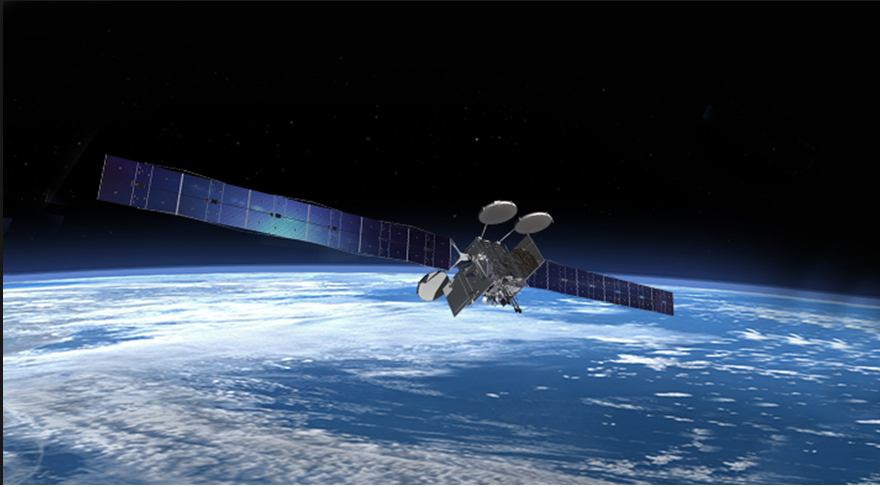
The UK roll-out of ultra high-speed fibre, like that of 5G, is being stymied in the UK by the huge capital requirements to build out the infrastructure.
With the satellite business one of the fastest growing areas of the space industry, could satellite broadband be a genuinely competitive rival?
US-headquartered ViaSat operates large geosynchronous earth orbit (GEO) satellites to provide broadband for users in remote locations.
Last year’s launch of its ViaSat-2 put the most powerful GEO satellite in orbit.
Last week, meanwhile, the company extended its UK footprint with the acquisition of MOD supplier Horsebridge Defence and Security.
Evan Dixon, Deputy CEO, Viasat Europe, joined Computer Business Review for a chat.
What Do you Make of UK Broadbank Infrastructure?
There remains a massive gulf between those parts of the country that actually have a truly high-speed internet service, and those that are still lacking. We are at the beginning of a two-tiered internet system – where areas with fast services reap the benefits in terms of education, opportunity and investment, while those struggling for speed are left further behind.
The definition of “superfast” broadband will also evolve. With the UK’s data consumption growth leading Europe, speeds will have to constantly increase to keep up with demand; 24 Mbps may be enough today, but not in 2020.
In November, the government published its Industrial Strategy green paper, which outlined that it would continue work to complete the roll-out of 4G and superfast broadband in order to give every individual, business and public premise the right to request an affordable high speed broadband connection. In order to make this ambition a reality, the government has invested over £1 billion to accelerate the development and uptake of next generation digital infrastructure – including full fibre and 5G. However, we need to ensure money is spent in the right places and on the right technologies. Fibre alone, while offering hyper-fast speeds in the right circumstances, will never reach every household without being prohibitively expensive.
Do you Think Satellite has a Role to Play?
Until recently, the UK’s superfast broadband delivery strategy has been focused on, and possibly blinded by, fibre-optic broadband; to the extent that fixation on the technology has meant not addressing the whole population or catering for broadband use beyond fixed houses and businesses.
See also: UK Space Industry in Ambitious Push for £250 Billion Growth
All of the “easy” connections in the country have been made, meaning getting superfast broadband to every remaining individual, business and public premise will be exponentially more difficult and costly with each new connection added. Fibre providers are unlikely to bear this cost on their own. For instance, Virgin Media recently announced fibre expansion into rural areas – but with a customer out-of-pocket connection fee of £300 to help offset the costs of running fibre through uninhabited countryside.
Compared to satellite, the cost to pass a home with superfast broadband begins to look excessive. Satellite technology is constantly advancing, with satellite broadband now delivering 100 Mbps plans with unlimited data in the United States. With similar satellite technology come soon to the UK, the final landscape could mean superfast connections are available to more households, business, and emergency services support.
Tell us about ViaSat-2 …
High-speed satellites have the potential to connect every single UK citizen to superfast broadband. Fundamentally, Britain needs a more consistent and better performing internet serving the entire population – as the GDP of every developed country today is intrinsically linked to the health of their digital economy.
ViaSat-2 is the most powerful commercial broadband satellite ever built, and is already connecting consumers with superfast, unlimited broadband data plans.
If you wanted to picture it, it is currently 22,236 miles above the equator, it’s 158ft long, roughly the same length as Nelson’s Column and The Arc de Triomphe, and has 23 miles of electrical wiring inside. It took 40 months to design and build, and we expect it to be operational for more than 14 years.
Can Satellite Really Compete with Fibre?
The broadband spectrum is not an infinite resource and connecting millions of people around the world to fast, reliable internet is no easy feat. The financial and technological challenges are numerous, and that’s before you even consider how consumer and business expectations have changed in the last decade. As we live more and more of our lives online, any disruption to broadband service is considered to be unacceptable, and maintaining such standards is a gruelling challenge every day.
In terms of satellite more specifically, it has faced an uphill battle for adoption thanks to outdated notions that have been difficult to shake. The old view of satellite is an expensive low-bandwidth service that could only reach a restricted number of users, such as those stationed on oil rigs, with set up and monthly costs in the thousands. This couldn’t be further from the case today. Modern satellites can service more than a million users, with set-up and infrastructure costs per user less than fibre and end-user costs similar to telcos for a fixed-speed, superfast service.
Quite simply, for hundreds of thousands of UK households, satellite is the best option for affordable superfast broadband – in rural parts of the country, it may well be the only option available. Bundle in voice over IP, removing the need for a landline charge, and it becomes even more cost effective.
What do you make of the UK government’s Space Industry Bill?
The Space Industry Bill is destined to bring real world benefits to the UK, including innovation, employment and economic growth. By looking to the stars, we bring innovation, employment and business growth back to the UK economy. Space is one of the eight great technologies for UK. It is a dynamic, fast growing sector which employs some of the country’s top talent, as well as contributing to economic growth and other important national needs, such as Earth observation and satellite communications. It should also help cement the UK’s position in the global space industry.
The UK is one of the largest contributors to the European Space Agency already, which will be key towards meeting the objectives outlined in the Space Industry Bill. To compete on a global scale, it takes a larger investment than any single European country has an appetite. With the combined investments from major European powers, ESA has the resources to do projects on a global scale. This drives further innovation and employment back into the British economy, not to mention creating national heroes like Tim Peake.
For UK tech companies, a thriving UK space industry represents a unique commercial opportunity, not to mention the opportunity for new partnerships and R&D. To get a new rocket or satellite into orbit, it takes an inordinate amount of time, effort and money. From the communications equipment, cybersecurity features, right down to the very nuts and bolts used in these devices, no organisation can do it alone. Partnerships with technology vendors, service providers and manufacturers of materials like Kevlar are key to the success of any space project.
What’s Next for Viasat?
ViaSat-2 is only the beginning: when ViaSat-3 enters service in the 2020 time period, Viasat will be able to beam more than 1 Terabit per second to meet consumer and business demand for broadband.
The power of satellite to deliver broadband to underserved communities is finally starting to hit home, which is why the European Space Agency and Viasat recently entered a €68m Public Private Partnership to fund development of key components of the ViaSat-3 communications system. We expect to see exciting developments from within the industry growing rapidly to meet the ongoing opportunities the ViaSat-3 class of satellites will be able to deliver.
More generally, advanced satellite-enabled broadband services will play an important role in helping to bridge the digital divide across Europe. By delivering high-quality broadband connectivity to the unserved and underserved, pressure that incumbents burdened with extensive legacy networks will be lessened, and Government agencies can finally fulfil their promise to connect every home.
With satellite’s ability to deliver fast broadband, we’re seeing a string of new innovative use cases emerge and develop. For instance, it’s becoming expected that airlines now offer in-flight connectivity to passengers, pilots and crew—something that has only been made possible since the advancements in high-capacity satellites. It’s an exciting time for broadband connectivity—as companies like Viasat challenge the satellite industry to bring faster, more affordable broadband to new markets and geographies.






